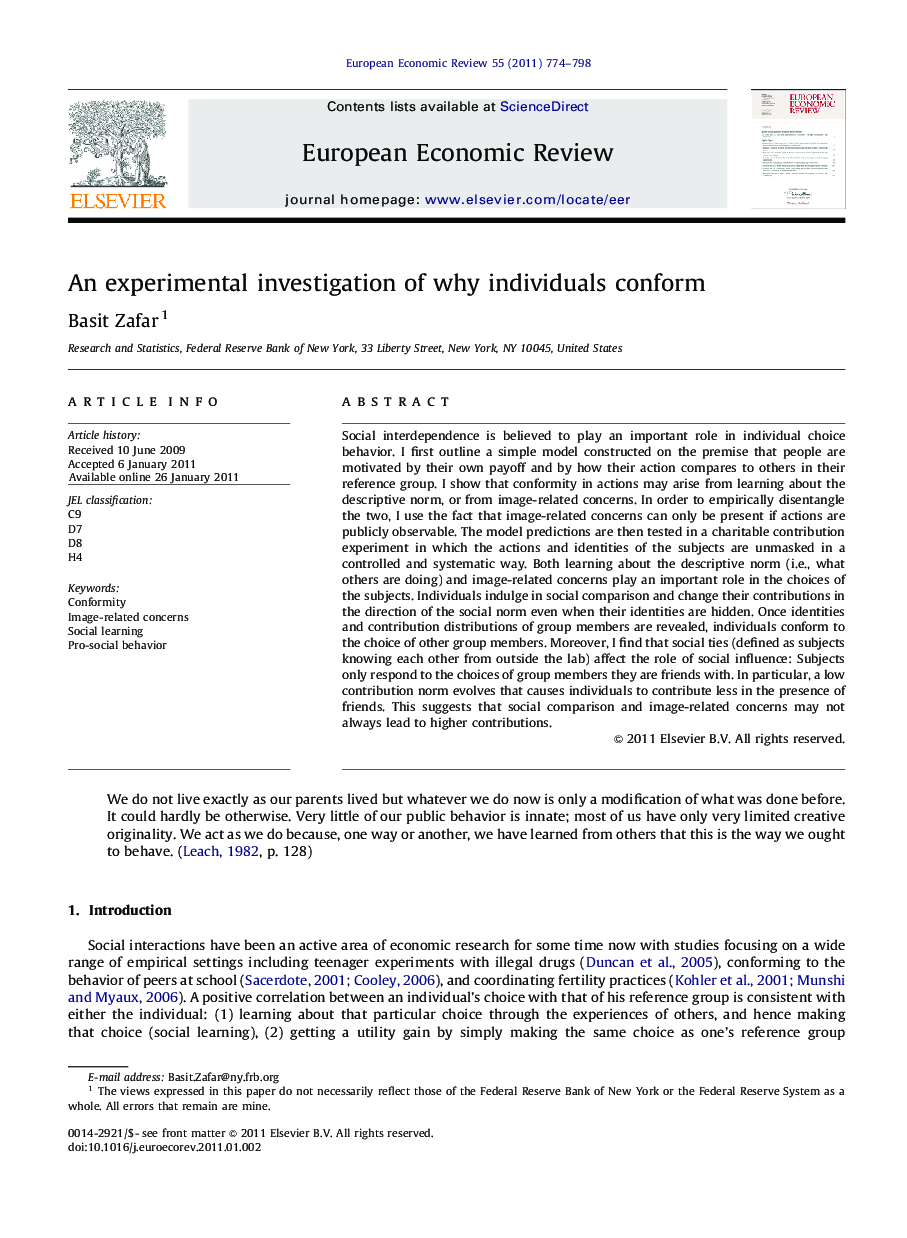| Article ID | Journal | Published Year | Pages | File Type |
|---|---|---|---|---|
| 5067301 | European Economic Review | 2011 | 25 Pages |
Abstract
Social interdependence is believed to play an important role in individual choice behavior. I first outline a simple model constructed on the premise that people are motivated by their own payoff and by how their action compares to others in their reference group. I show that conformity in actions may arise from learning about the descriptive norm, or from image-related concerns. In order to empirically disentangle the two, I use the fact that image-related concerns can only be present if actions are publicly observable. The model predictions are then tested in a charitable contribution experiment in which the actions and identities of the subjects are unmasked in a controlled and systematic way. Both learning about the descriptive norm (i.e., what others are doing) and image-related concerns play an important role in the choices of the subjects. Individuals indulge in social comparison and change their contributions in the direction of the social norm even when their identities are hidden. Once identities and contribution distributions of group members are revealed, individuals conform to the choice of other group members. Moreover, I find that social ties (defined as subjects knowing each other from outside the lab) affect the role of social influence: Subjects only respond to the choices of group members they are friends with. In particular, a low contribution norm evolves that causes individuals to contribute less in the presence of friends. This suggests that social comparison and image-related concerns may not always lead to higher contributions.
Related Topics
Social Sciences and Humanities
Economics, Econometrics and Finance
Economics and Econometrics
Authors
Basit Zafar,
